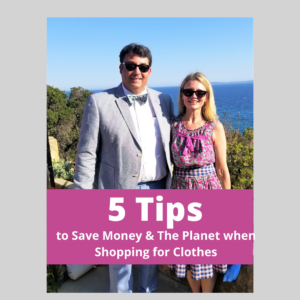
I love clothes! I’m also pretty horrified with how destructive the fashion industry is to our planet. According to Business Insider The fashion industry emits more carbon than international flights and maritime shipping combined.
Clothing production is responsible for 10% of all carbon emissions, it’s the second-largest consumer of the world’s water supply and pollutes the oceans with micro-plastics. Yikes! Also, and I find this shocking because I still wear clothes I’ve had for 30 years, according to a Washington Post article ‘The High Price of Fashion’ the average piece of clothing is only worn 7 times before it’s discarded. And lots of those discarded clothes end up in landfills. The Environmental Protection Agency reported in 2015 that Americans sent 10.5 million tons of textiles (the majority of it clothing) to landfills that year. And, just in case you’re not horrified yet, most clothing contains synthetics which are not biodegradable.
So what’s a clothes-horse like me to do?? Luckily there are more and more options to shop-used and the trend of thrifting is growing. I actually have a better wardrobe now that I try to buy-used-only because I find designer fashion at thrift prices I would never have been able to afford new!
Is Buying Second Hand Better for the Environment?
Yes. Second-hand clothes don’t consume further resources when their usefulness is extended. They’ve been made, so another life for the clothes is a bonus for the planet. Choosing used reduces the water waste and chemical pollution associated with fashion production. Imagine if you rescued a gorgeous dress that’s been worn once, or even 3 or 7 times, but wasn’t loved anymore by its original owner. It’s in great shape, you love it and you wear it 7 times yourself. You’ve just doubled the life of the garment and a new garment didn’t need to be produced to meet your needs. The more you repeat that scenario the more you are doing to prevent over-production and over taxing our environment. More than 100 billion items of clothing are produced each year and roughly 20% of that isn’t even sold and is either buried, shredded or incinerated.
Five Convenient Ways to Shop Used (Second Hand):
- On-line Re-Sale Sites are hot! ThredUp is the largest on-line thrift retailer in the US and they process literally thousands of pieces each day. You can sort through their enormous inventory by size, style, brand, quality or price, and their platform offers options to create a file for items you love; you can bundle your purchases to reduce the environmental impact (and cost) of shipping; and they offer an interest-free monthly payment program for items you absolutely must have but can’t afford to pay for in one lump sum. The Marc Jacobs purple and green dress I’m wearing in the photo above is a ThredUp find. The red Kate Spade dress I’m wearing in the photo below? Yep, that’s from ThredUp too. On the selling side, I’ve sent ThredUp 12 bags of clothes to sell and I’ve made over $700, which I used as credit to transform my closet from high-street to designer.
- Ebay is the thrift lovers answer to Amazon. Virtually anything you are searching to buy, clothing or not, can be found on Ebay, and a lot of it is secondhand or unsold new merchandise that otherwise would be discarded. I found my wedding dress on Ebay – a J.Crew Wedding Collection, 100% silk, new-with-tags dress from the previous year (thankfully sold on Ebay and not sent to a landfill) that I purchased for less than 20% of its retail price. I also found a gorgeous Italian wool tuxedo jacket for my husband (featured in the photo below) in perfect condition, from a tuxedo-rental store in Italy selling through Ebay.
- Etsy is another goldmine for thrifting – a quick search for whatever piece of clothing you’re looking for will give you pages of Etsy shops to browse through. It’s also an easy way to find cottage-industry brands to support. I found a pair of ‘new-vintage’ shoes for my husband on Etsy, from the 1950’s, still in their original box (they’re the amazing green & cream patent shoes he’s wearing in one of the thumbnail photos below)!
- Clothing Swap Parties are a great way to clean out your closet and revamp your wardrobe with friends. You and each of your guests bring an agreed upon amount of clothing and accessories to trade. Serve wine and hors d’oeuvres to make it feel like a party and swap clothes with your friends! A donation box for unclaimed pieces ensures that wearable clothing still has the chance for a 2nd (or 3rd!) life.
- Local thrift and consignment shops If you live in a large American city you are probably spoiled for choice with good thrift and consignment stores. I lived in San Francisco in 1993 and still have a couple of treasured pieces from the epic shops in Haight-Ashbury. If you live in a small town your choices are more limited but it’s worth investigating. I’m fortunate to have a killer-mid-century store in my small town called JoRetro which has built a national reputation with her Etsy shop and social media pages.
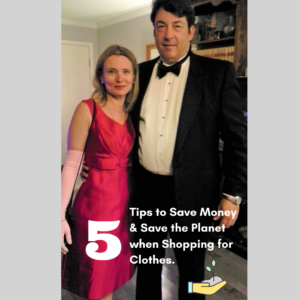
Which Fabrics are Best for the Environment?
Natural fibers are better for the environment because they are biodegradable. Synthetic fabrics in a landfill will be there forever, similar to plastic. Also, plastic fibers in synthetic clothing (think nylon, polyester, spandex) leach into the environment just by being washed! Estimates vary, but it’s possible that a single load of laundry could release hundreds of thousands of fibers from our clothes into the water supply.
Cotton, wool, silk and other plant and animal fibers are also, I think, more comfortable to wear, they feel and look better! Natural fibers are a sustainable resource as they are renewable, biodegradable and carbon neutral. The Best Eco-Friendly fabric is organic cotton, produced with GMO-free seed and follows practices that maintain soil health, conserve water and support biodiversity.
Also, a lot of clothing made with natural fabrics can be washed at home with cold water which reduces the environmental impact and energy footprint of washing in warm/hot water. For items that absolutely require the dry-cleaner search your neighborhood for an organic dry-cleaner – they’re usually the same price and a lot cleaner for the environment! Go-to natural fabrics are:
- Cotton (organic if possible)
- Silk
- Wool
- Linen
Add up the impact of shopping secondhand, choosing natural fiber clothing, skipping the overnight shipping and washing in cold water, and you’ve started to Save the World Every Day!

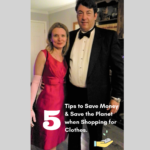
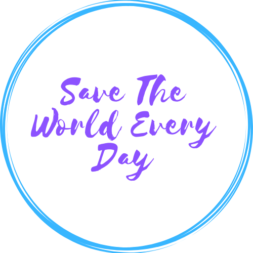
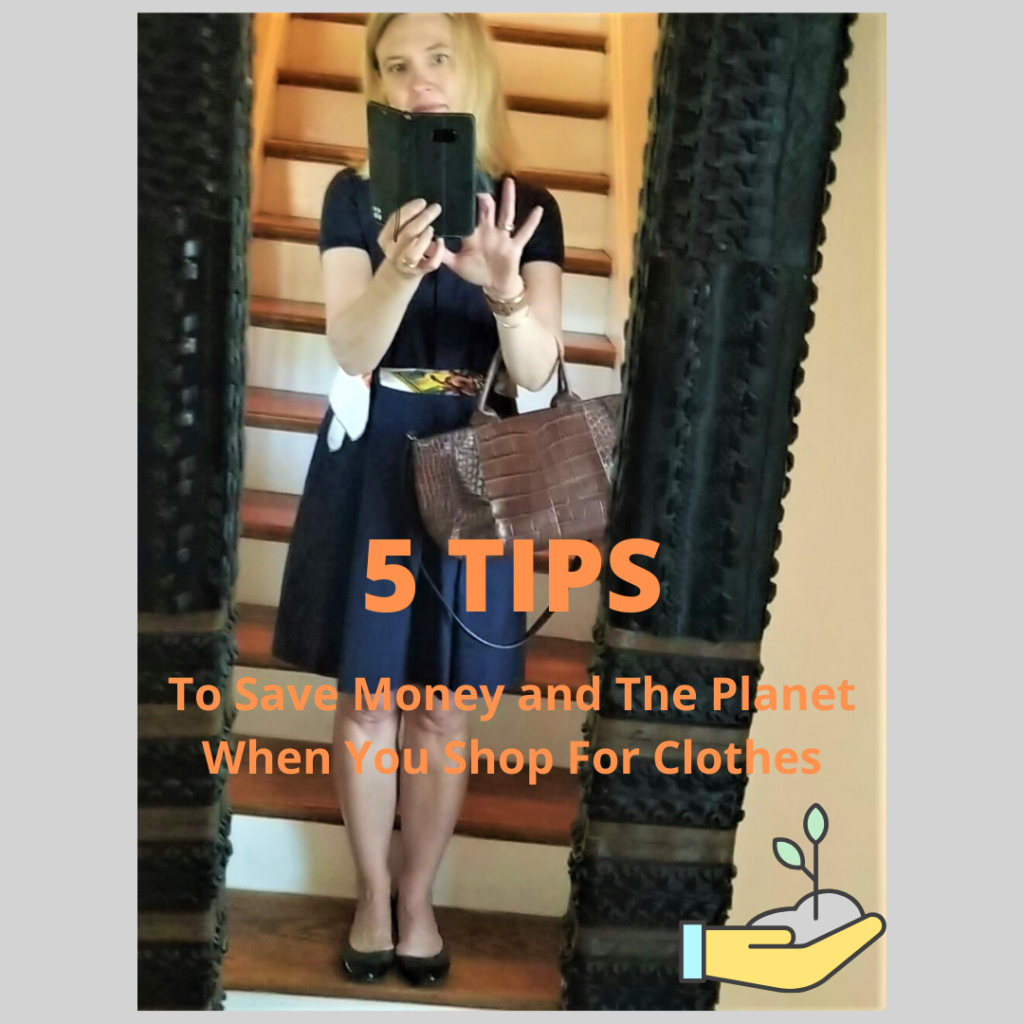

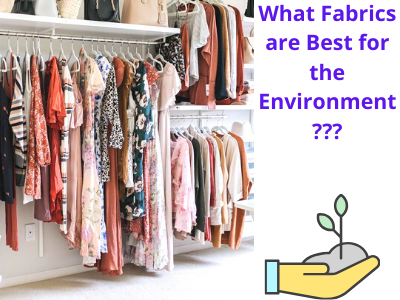
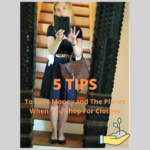
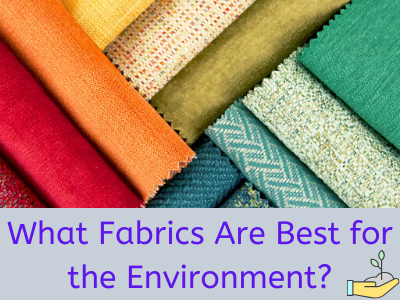
Congratulations on your new blog and podcast! I’m enjoying both. Thank you for sharing my shop and how to stop buying Fast Fashion.
My first Comment! Thank you and I look forward to featuring JoRetro on a vintage-shopping podcast!